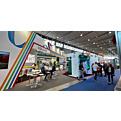Tomorrow, the Spanish university team Hyperloop UPV will reveal their prototype for the 2018 Hyperloop Pod Competition, promoted by Elon Musk to develop this innovative means of transport together with universities from all over the world. As ISTOBAL Carlovers, we are all looking forward to having all the details of Hyperloop Valentia so here goes an overview of the means of transport that will revolutionize the way we travel in the future. We have selected some technologies that are bound to make a difference in mobility and transport in a few years’ time.
Hyperloop
We are definitely familiar with this technology, as we are the sponsors of one of the hyperloop prototypes that will compete to be the fastest in California. Organized by the American aerospace company SpaceX, the competition aims to develop a revolutionary means of transport for passengers and cargo powered by 100% renewable energy that will allow us to travel at more than 1,100 km/h. Hyperloop UPV is the only Spanish team. They will travel to Los Angeles to present their prototype, scaled for one train passenger. The vehicle will travel at full speed in a tube over a 1.5 km track. For more information, see our partnership with Hyperloop UPV here.
Flying cars
Some time ago, we dedicated one of our features to all the prototypes of future vehicles that will fly instead of moving on roads. Companies such as Kitty Hawk -owned by the founder of Google-, the start-up Cartivator -backed by Toyota-, Airbus, Uber, or the Chinese drone manufacturer EHang are competing to develop flying cars and taxis that will allow us to travel the sky. Have a look at these vehicles in this link.
A plane with coaches or a flying train?
Since we are up in the air, Clip-Air is another revolutionary aircraft design: with a capacity for 450 passengers, this plane has one flying wing and shipping containers at the bottom that are compatible with train tracks. In this new concept, there is the flying component including engines, cockpit and wing, and then there is the detachable pods that can act as cabin or cargo hold and also carry the fuel tank. The containers can be combined in different ways, thus becoming a more flexible, efficient and energy-saving means of transport.
Solar vehicles
Speaking about energy, what if we could travel with sunlight? Some companies are studying this transport technology applied to car and planes. Solar cars are actually cars with an electric motor powered by solar panels or cells fitted on the bodywork. Serial production is not yet a reality but a solar car competition has been held for quite a few years, the World Solar Challenge, a car race that began in Australia in 1987.
The list of revolutionary means of transport is never-ending: autonomous cars -a work in progress-, see-through planes, individual public transporters, supersonic aircraft... The world of transport is constantly evolving, just like the car wash world. After all, users in the future will also want to travel in a clean vehicle.






























